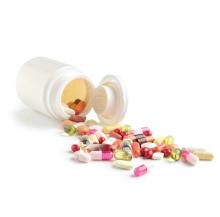Use of prescription medication overall decreased in children and adolescents over the past 15 years, but certain medication classes saw increases over that time period, according to a comprehensive analysis of cross-sectional, nationally representative survey data.
Reported use of any prescription medication in the past 30 days decreased from 25% during 1999-2002 to 22% during 2011-2014 (P = .04), according to the analysis based on data from 38,277 children and adolescents aged 0-19 years in the National Health and Nutrition Examination Survey (NHANES).
That decrease in part reflected less prescribing of antibiotics, antihistamines, and upper respiratory drugs, according to a report on the study in JAMA.However, the study showed increases over time in prescribing of medications for asthma, ADHD, and contraception, according to Craig M. Hales, MD, of the National Center for Health Statistics, Centers for Disease Control and Prevention, Hyattsville, Md., and his coinvestigators.
“Monitoring trends in use of prescription medications among children and adolescents provides insights on several important public health concerns, such as shifting disease burden, changes in access to health care and medicines, increases in the adoption of appropriate therapies, and decreases in use of inappropriate or ineffective treatments,” Dr. Hales and his coauthors said.
They found significant linear trends in 14 therapeutic classes or subclasses, including six decreases and eight increases, when looking at combined survey data for reported use of any prescription medication and reported use of two or more prescription medications in the prior 30 days.
Of note, antibiotic usage decreased significantly from 8% during 1999-2002 to 5% during 2011-2014, including decreases in amoxicillin, amoxicillin/clavulanate, and cephalosporins. Likewise, antihistamine use was down over time, from 4% to 2%, as was use of upper respiratory combination medications, which decreased from 2% to 0.5%.


